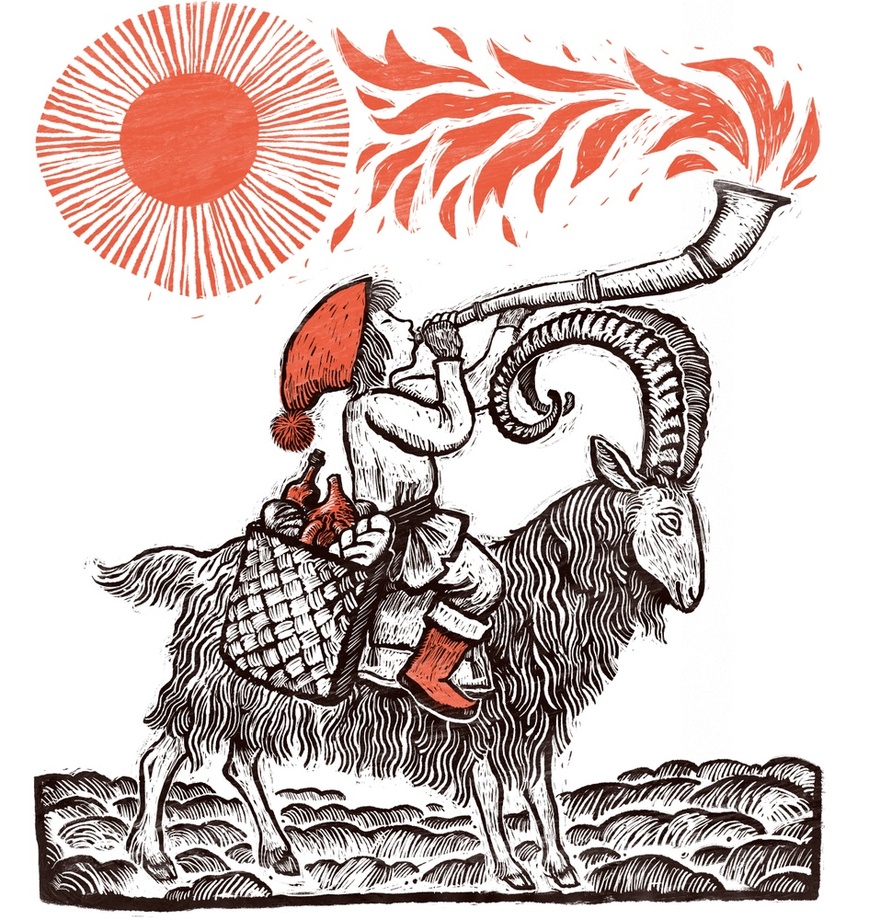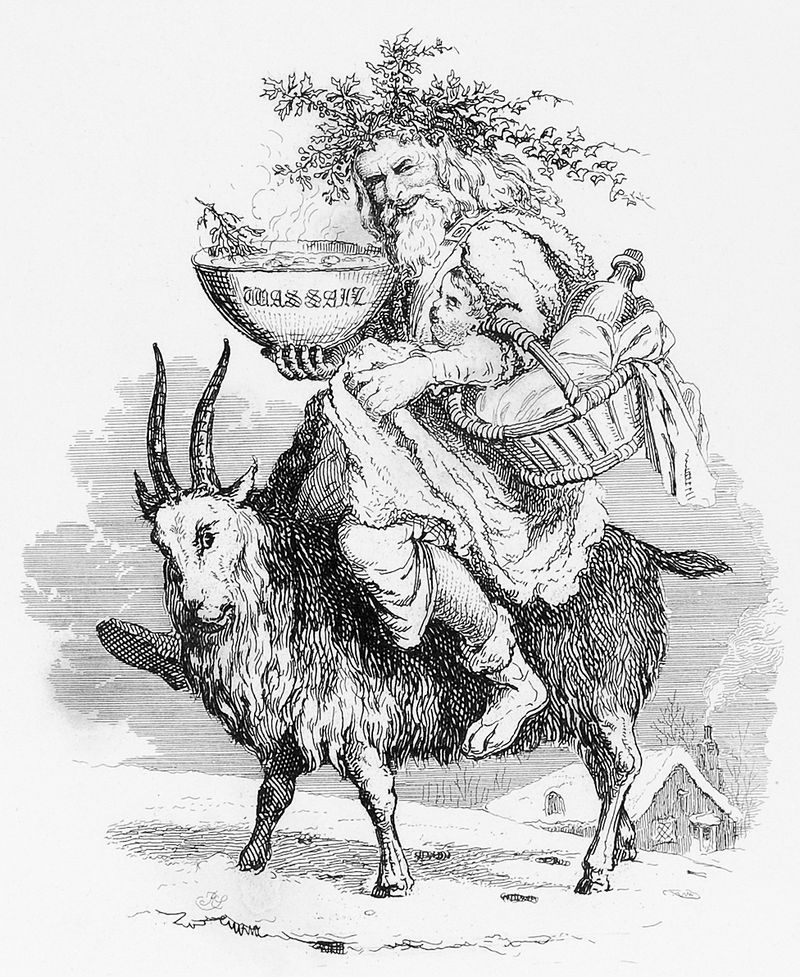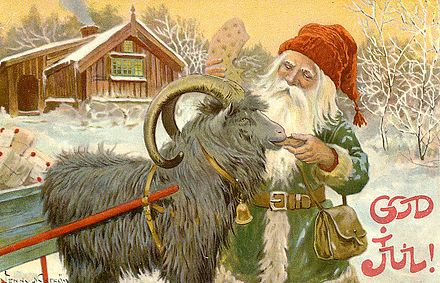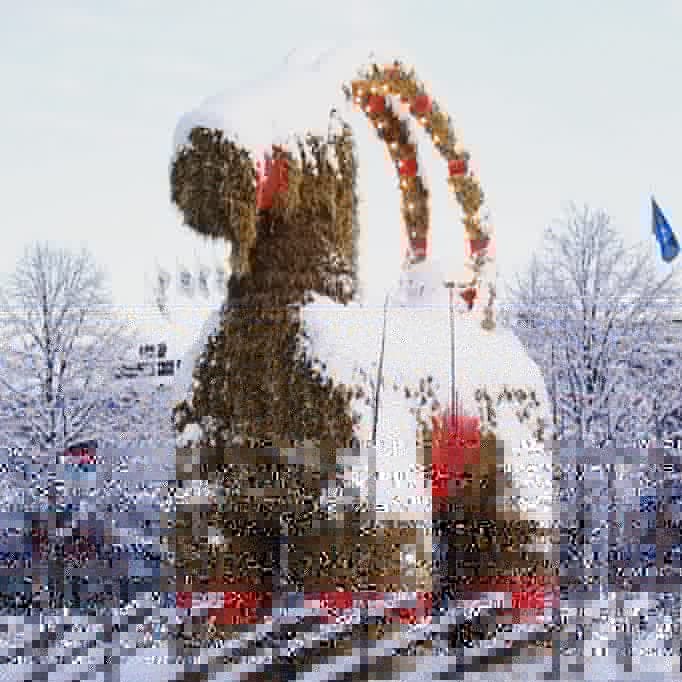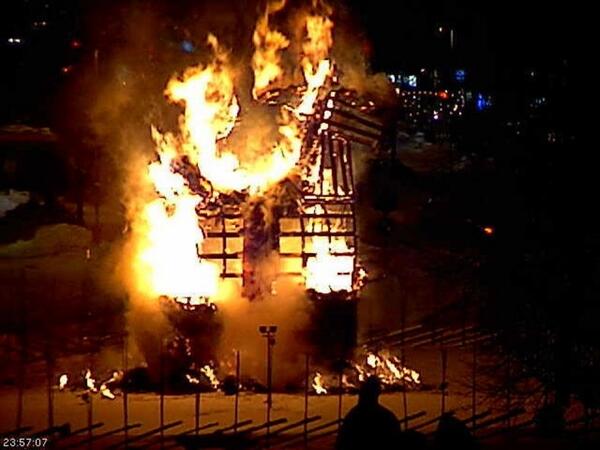Originating in pre-Christian Scandinavia and the Germanic pagan tradition, the last batch of wheat of the harvest was designated ‘Julbocken’, which translates to Yule Goat. Why a goat?
In Norse myth the goat is a prized creature; two magical goats called Tanngrisnir and Tanngnjóstr traditionally pull the chariot of the thunder god Thor.
The custom also chimes with the ancient proto-Slavic Yule-equivalent festival Koliada in which the god Devac (or Dažbog) was represented by a person dressed as a white goat, who would go door-to-door demanding offerings in the form of presents.
As Europe became more culturally interconnected this regional tradition overlapped with others. During the 11th century in Sweden actors performed simple plays wherein Saint Nicholas would lead a goat man around by a leash,
a skit also re-enacted during the related Childermas festival. This was meant to symbolize keeping the devil under control.
The Yule Goat could also be a busybody; in Sweden he manifested as an invisible spirit that would appear before the big day to make sure Yule preparations were being done correctly.
In later incarnations the Yule Goat took on a more bawdy nature. Young men would dance down streets singing and playing pranks on their neighbors.
The Yule Goat was their mascot, a raucous ringleader demanding to be placated with treats, sometimes to menacing effect. Not all children are charmed by him.
Inevitably by the 19th century the goat had been enveloped by the folk juggernaut that is Santa Claus; Scandinavian children looked forward to gifts delivered by the two figures. Today the Yule Goat is as familiar a seasonal symbol as reindeer and snowmen.
For most Swedes Yule Goat ornaments are traditionally made of straw with red ribbons tied around their neck and horns. Goat big or go home, according to in the town of Gävle, which every year since the 1960s has erected a massive Yule Goat in its main square.
Images:
Yule goat by Chuck Groenink @ChuckGroenink
'Old Christmas', riding a yule goat; 1836 illustration by Robert Seymour
God Jul by Jenny Nyström, 19th century Christmas card design.
The Gävle Goat in 2009
Yule goat by Chuck Groenink @ChuckGroenink
'Old Christmas', riding a yule goat; 1836 illustration by Robert Seymour
God Jul by Jenny Nyström, 19th century Christmas card design.
The Gävle Goat in 2009

 Read on Twitter
Read on Twitter